Of the many milestones in the University of Macau’s (UM) 38-year history, the most important one was the construction of a new campus in 2009 on Hengqin Island, Guangdong province. It shows the support of the central and Macao SAR governments for higher education development in Macao. Since its handover, Macao has experienced fast economic growth and an ever-increasing need for economic diversification, which in turn has led to growing demand for professionals in different fields. In this context, higher education institutions in Macao scramble to expand their campuses in order to nurture more professionals for society. UM is no exception. Dr Kou Mei, UM’s vice rector for administration, explains that the management team plans to make some adjustments to the teaching and research facilities on campus in order to support the university’s rapid development and continued expansion.
An Unprecedented Move in Macao’s Higher Education History
On 27 June 2009, the Standing Committee of the National People’s Congress adopted a bill on the construction of a new UM campus on Hengqin Island, Guangdong province. Moreover, the bill authorised Macao Special Administrative Region to exercise jurisdiction over the new campus. Dr Kou says, ‘The new campus was an extraordinary gift from the central government to the SAR government and our university. It was also one of the earliest examples of Guangdong and Macao’s joint development of Hengqin Island. It is extraordinary because it is an innovative implementation of the “One Country, Two Systems” policy.’ On 20 December of the same year, then President Hu Jintao officiated at the groundbreaking ceremony for the new campus. With the joint effort of various parties, the new campus was completed on 20 July 2013 and was officially put into use on 5 November of the same year. The design and construction of the campus and the subsequent relocation only took a little over three years. UM’s relocation to the new campus in 2014 was an unprecedented move in Macao’s higher education history, allowing UM to shed the unwanted reputation as ‘a campus-less university’.
Campus Planning to Support the University’s Development
Covering approximately 1.09 square kilometres, the new campus is about 20 times larger than the old campus. It puts UM in a much more favourable position to pursue its educational ideals in order to nurture more professionals to support the sustainable development of Macao.
Currently, there are more than 60 buildings on the new campus to house the various faculties, research institutes, and centres. They include the Faculty of Arts and Humanities, Faculty of Business Administration, Faculty of Education, Faculty of Health Sciences, Faculty of Law, Faculty of Social Sciences, Faculty of Science and Technology, Honours College, Graduate School, Centre for Continuing Education, Institute of Chinese Medical Sciences, Institute of Applied Physics and Materials Engineering (IAPME), Institute of Collaborative Innovation, Institute of Microelectronics, Centre for Macau Studies, Asia-Pacific Academy of Economics and Management, and Institute for Advanced Studies in Humanities and Social Sciences. The university also has Asia’s largest residential college (RC) system, with ten RCs in operation to facilitate the implementation of whole-person education.
The university plans to increase the numbers of both undergraduate and postgraduate students over the next few years, with the total number of students projected to increase by 20 per cent, from the current 10,000 to more than 12,000. To cope with the increasing number of students, two new RCs will be built and put into use in the 2019/2020 academic year, bringing the total number of RCs to 12. Each RC is a close-knit community where students live and learn together. The well-designed courses and activities aim to help students grow into individuals with leadership skills, a global mindset, and a caring heart.
Thanks to the advanced facilities on the new campus, UM has attracted many outstanding scholars from around the world, whose appointment has greatly enhanced the quality of teaching and research at the university. In recent years, UM has progressed rapidly in both teaching and research, with three state key laboratories now in operation. In response to these new developments, the management team plans to make some adjustments to the laboratories in the Research Building, including laboratories on each floor of the Faculty of Health Sciences; the State Key Laboratory of Internet of Things for Smart City; the laboratories in the fields of large-scale sensor network, energy harvesting, and precision medicine; the centre for the internationalisation and innovation of Chinese medicine; and the laboratories of the IAPME. Dr Kou says, ‘We will continue to beautify the campus and improve the facilities, in order to provide a more beautiful and comfortable environment in which students, faculty and staff can study, work and live. We want to create an environment conducive to scholarly pursuits. We hope the 20-fold increase in the campus size will translate into a 20-fold increase in the speed of the university’s development.’
Source: UMagazine Issue 21
Related articles: UM and Macao over the Past 20 Years Internationalisation through New PositioningNew Research Blueprint to Meet Global Trends Enhancing UM’s International Reputation with a New Global Strategy Supporting Macao’s Development with Whole-person Education
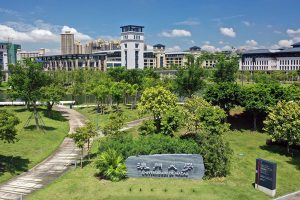
UM’s new campus shows the support of the central and Macao SAR governments for higher education development in Macao
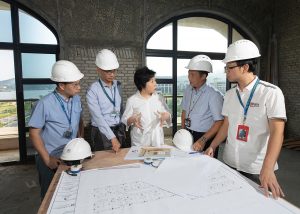
UM’s Vice Rector (Administration)
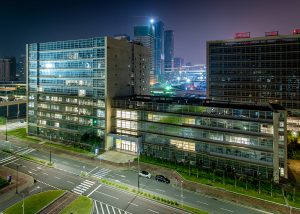
Some adjustments will be made to the laboratories in the Research Building to support the university’s development
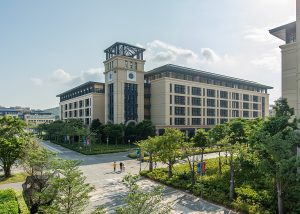
Currently, there are more than 60 buildings on the new campus.
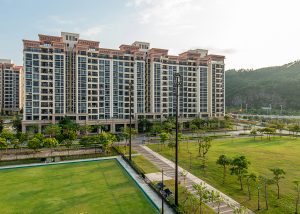
UM continues to improve its facilities
